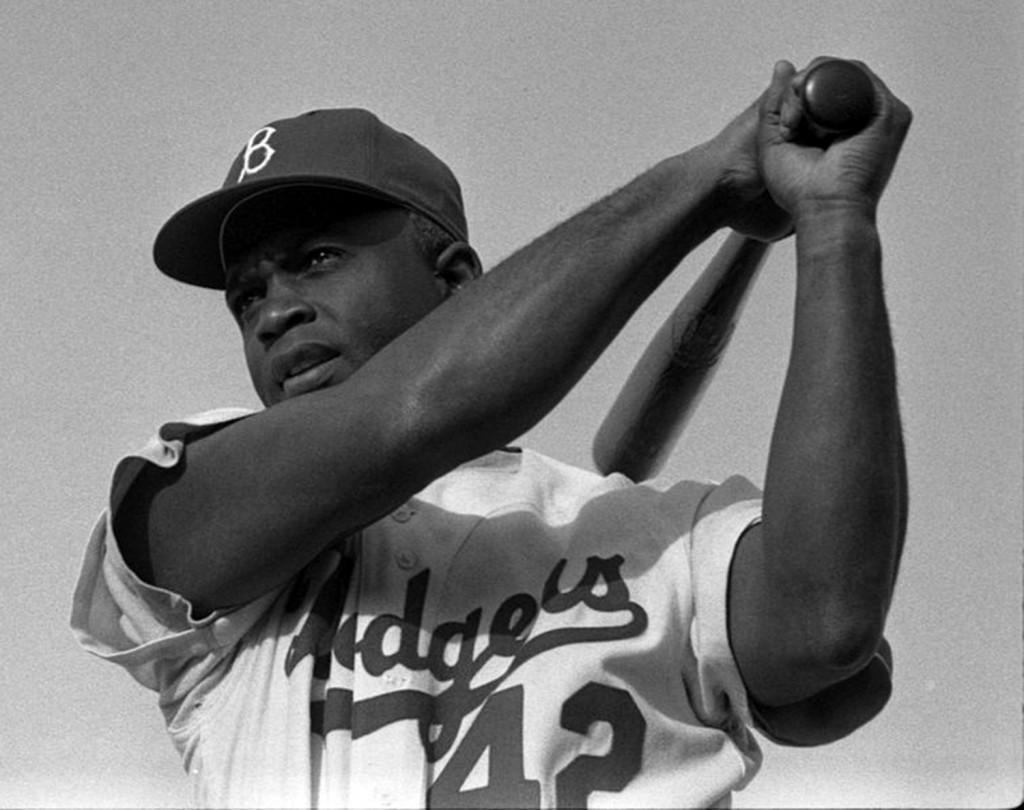Jackie Robinson: Breaking Barriers
April 15, 2014

On April 15, 1947, Jackie Robinson did the extraordinary: took a historic first step on the diamond as the first African American Major League Baseball player, while also making a stride toward ending segregation on and off the field.
Ten years ago, Major League Baseball adopted a new annual tradition, properly named “Jackie Robinson Day,” that had every player on every team wear jersey No. 42 in honor of Jackie Robinson’s debut.
Robinson broke the color barrier by starting at first base for the Brooklyn Dodgers. In that same year, Robinson helped lead the team to winning the National League pennant, and he went on to win Rookie of the Year.
Robinson took on a heavy burden when he was offered a spot on the Brooklyn Dodgers’ roster. He was asked not to talk back, not to fight back and not to lose his temper in an environment filled with hate and racism. He had to represent himself, but also the African American community on a national stage.
Patrick B. Miller, an NEIU history professor and editor of Sport and the Color Line: Black Athletes and Race Relations in Twentieth-Century America, describes Robinson as a person who embodied and personified civil rights.
“He saw himself in history,” said Miller. “He knew he had a role to play and it wasn’t just in the infield for the Brooklyn Dodgers or in the batting box for Major League Baseball. He knew that he was a path-breaker. He was a game changer.”
Branch Rickey, general manager of the Brooklyn Dodgers, famously told Robinson that he was “looking for a ballplayer with guts enough not to fight back.”
The daunting task was set. Rickey had taken Robinson in with the team where they alone would have to face the hostile world. No one was with them.
“We can win only if we can convince the world that I’m doing this because you’re a great ballplayer, a fine gentleman,” Rickey told Robinson.
Robinson ended his first season with a batting average of .297, scoring 125 runs, hitting 12 home runs, and driving in 48 runs. He led the league in sacrifice hits with 28, and in stolen bases with 29.
Robinson’s not only changed the game of baseball on the field, but also changed racist thinking off the field. America became witness to a team that embraced a man of color.
Robinson impacted players like Ernie Banks, the first African American to join the Chicago Cubs. In an interview with WBEZ in 2010, Banks recalled Robinson approaching him. “He came over and said to me, ‘Hey, glad you’re here. Listen and you can learn,’” said Banks.
Banks adjusted and embraced the integration of white and black players. He would go on to win back-to-back MVP awards, finished with a career total of 512 homeruns, and became affectionately known to Cubs fans as “Mr. Cub.”
Robinson’s mark on baseball paved the way for all African American athletes in other sports. By breaking the color barrier, other professional sports leagues began to desegregate as well.
The world has come a long way since April 15, 1947.
According to Richard Lapchick’s 2013 Racial and Gender Report Card, 38 percent of MLB players were of color (African-American, Latino, and Asian-American); 76 percent of NBA players were African-Americans; 43 percent of NBA head coaches were African-American while 36 perfect of NBA professional staff positions were held by people of color; and 66 percent of NFL players were African-American with 28 percent of NFL management positions held by people of color.
April 15 is a historic day for America. It’s a day where Americans can honor a man who fought the face of racism by not fighting back, but instead by fighting with merit.
Jackie Robinson is a man who greatly impacted sports, but more importantly ushered in a new era of integration both on and off the field.






